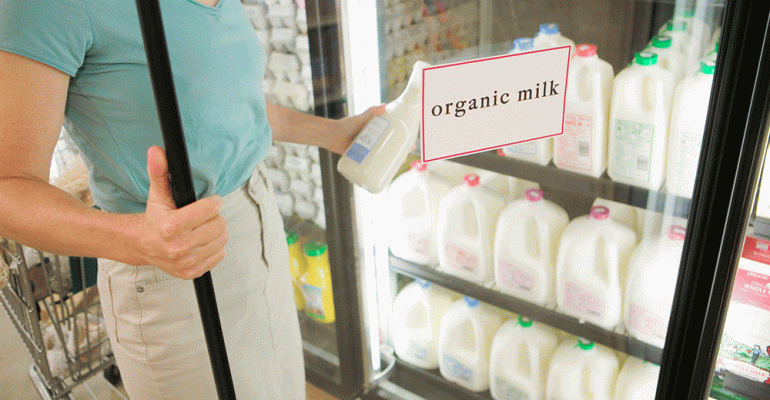Competing alternatives and a drop in interest for the entire milk category are partially responsible for a surplus of organic. The extra supply spells bad news for qualifying farmers, as their niche product is not likely to solve the issue.
The overabundance is the result of a recent shift according to the U.S. Department of Agriculture, with the organic dairy sector swapping out shortages for surpluses over the past two years. The organization predicts that the problem will persist through 2018.
https://www.ams.usda.gov/mnreports/md_da900.txt
“Clearly, organic is not a solution to that general decline in beverage milk consumption,” said Andrew Novakovic, professor of agricultural economics at Cornell University.
“Part of what we’re seeing in organic consumption is just a reflection of what we’re seeing in the entire beverage category,” he added. “Consumers are drinking something else.”
While some of those consumers may be moving away from dairy entirely, those that are looking for a similar alternative are turning to options such as non-GMO milk, which falls outside the general organic umbrella.
Some consumers, especially on the East Coast, are trying A2 milk.
This is an alternative that is produced conventionally but the cows are isolated to those that produce a certain type of protein that makes it more digestible if the consumer has a sensitivity to the proteins in milk.
It's worth noting that A2 is not a solution for lactose intolerance as that relates to the sugars in the dairy.
Novakovic explained that the surplus in organic products often results in processors and other farm-direct buyers offering to purchase the overflow to use in conventional dairy-based products.
However, this is typically at the lower price-point that traditional milk commands.
Though farmers are cutting their losses by unloading their product this way, they are stuck with the difference, as the current cost of conventional milk is less than half of what the organic price is.
“If you’re engaged in organic production of any product, certainly milk, you are accepting that you’re going to have a much higher cost of production model,” Novakovic said.
Farmers must invest a significant amount of time and money into their facility to be certified as an organic milk producer.
Also, organic farmers tend to operate within annual or six-month contracts that lock in price points with processors. Conventional milk farmers typically operate on month-to-month contracts.
The rate for the organic product stays the same regardless of the markets activity, of lack thereof.
Thus, neither retailers nor their customer base should expect pricing changes due to the surplus in organic milk supply.
The burden of the saturation shall be borne by the farmers but it is not likely to stall out organic production in the near future or push current organic farmers to revert back to traditional methods.
“What you’re asking yourself is not the question am I sufficiently profitable now, but rather do I anticipate being sufficiently profitable over the next three to five years," said Novakovic, commenting on the financial and time investment required to earn organic certification.
“If you’re going to recertify as organic you would probably have the same sort of lag.”
Novakovic said that though organic and natural trends may be popular, organic milk was never projected to dominate the industry.
“Even those passionate about organic milk as a technique believed it would be a niche," he said.
Contact: [email protected]
Twitter: @DanAMX





